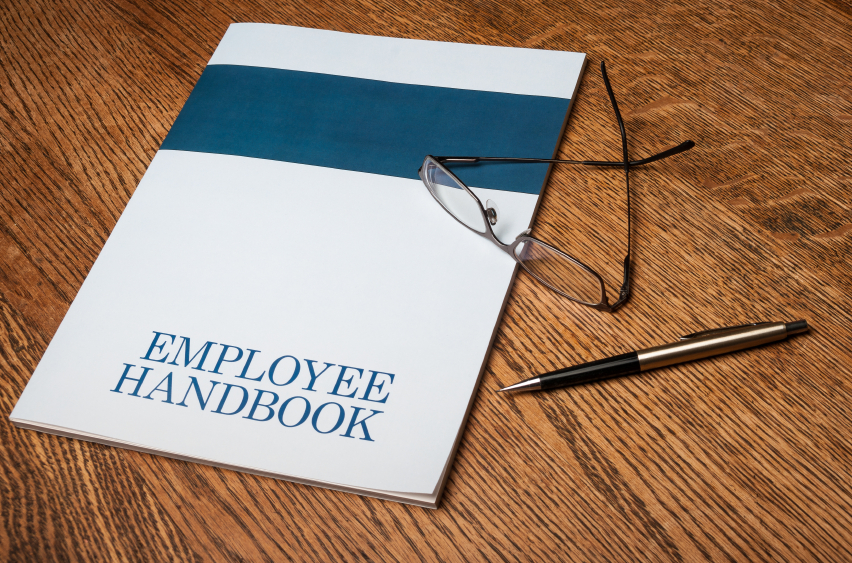THE LEGAL RISK OF AI HANDBOOK BUILDERS: WHY EMPLOYERS SHOULD THINK TWICE
The rate at which AI tools like ChatGPT and Microsoft Copilot have improved in recent months has created an increasingly tempting shortcut for businesses when it comes to their employment questions. But it’s not just chatbots. An abundance of AI-powered handbook builders has hit the market, each promising to have everything you need to create customized handbooks with updated federal, state, and local policies.
However, relying on AI to draft employee handbooks and policies can land employers in hot water when it comes to legal compliance. Especially for companies operating in states like Nevada, where certain areas of the law (including employment and labor) are riddled with unique quirks, relying on AI to write your foundational employment document can bring serious legal risks.



Risk of Incomplete, Outdated, or Missing Information in Employee Handbook
Every state has its own employment laws that augment what’s required of employers under federal law to varying degrees. Nevada is no exception. Employers who operate here are responsible for implementing the state’s specific rules around daily overtime, the 24-hour clock, our very precise mandatory PTO law, and our tip-credit ban, to name a few. Forming accurate company policies around these rules is crucial for employers to remain compliant and avoid fines.
As those who have relied too heavily on the AI-generated answer to their Google search know, AI-generated answers to even short, direct questions can be incomplete (and sometimes dead wrong). While this technology is progressing rapidly, it is still developing, and an AI employee handbook builder may not account for Nevada’s specific requirements unless your prompt is extremely specific. Even with the right prompt, many AI tools use underlying training datasets that are out of date when it comes to constantly evolving employment laws and guidelines.
AI Handbook Builder Lacks Legal Nuance
In addition to incorrect or missing information, companies using AI handbook generators run the risk of wording their policies in a way that carries legal meaning they never intended to include. While they can easily locate information in their data set, AI tools are far from being able to accurately interpret and manage legal nuances and conflicts.
In addition to state and federal law on the books, government entities like the Office of the Labor Commissioner and the Equal Employment Opportunity Commission all issue guidance on specific employment questions from time to time. An AI employee handbook generator that is prompted to build a legally compliant employee handbook may not properly take into account or balance this guidance against the letter of the law, leaving companies exposed to increased liability.
Further, precise language is the basis of all contracts, express or implied. In some jurisdictions, courts have found implied contractual obligations in specific employee handbook provisions based on wording alone. Even when proper legal disclaimers are included, an AI handbook builder’s wording of certain policies may lead to unexpected legal liability for businesses.



Destroying the Good Faith or Reasonable Belief Defense
Under many federal and state employment laws, employers can reduce or avoid liability for violations if they acted in good faith and with a reasonable belief that their policies complied with the law, even if they turned out to be mistaken. This legal defense often requires employers to show they relied on credible, authoritative guidance in their decision-making, including relying on the expertise of HR professionals or attorneys to help write and apply their specific policies.
“We drafted our handbook using AI software specifically programmed for compliance in this state.”
“We had our handbook drafted by an SPHR-certified professional and reviewed by counsel in 2025. We update it annually based on their input.”
Which statement would you rather make under oath?
Takeaway for Nevada Employers
Employee handbooks are far more than friendly lists of rules and benefits. While an employee handbook is not a formal contract, it is a critically important document that defines the employer-employee relationship, sets expectations, and often serves as evidence in administrative proceedings or litigation. When compliance and liability of your company are on the line, the last place you want to be is defending a policy that was generated by a bot.
By: Shay Digenan, Esq.
Mailing List Sign Up Form
Fill out this mailing list sign up form to receive monthly email updates on the latest NAE news, HR issues, special events, training dates and more!
